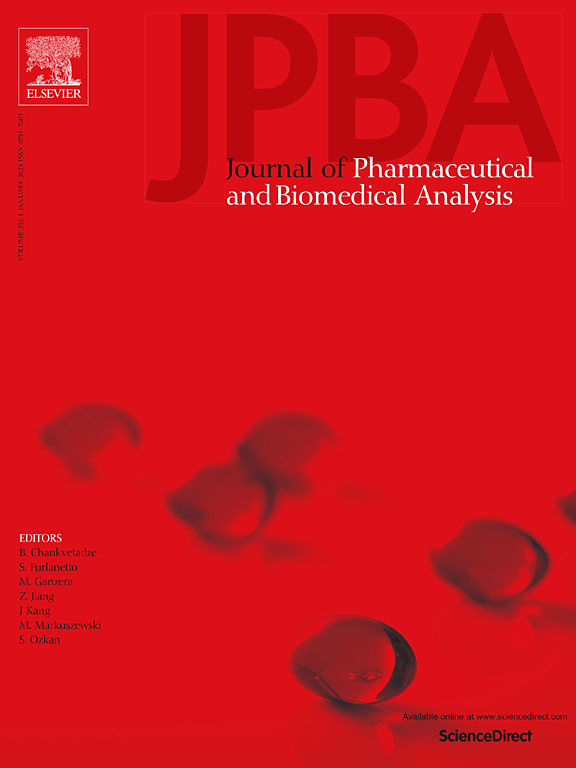Immunomagnetic bead-based sample preparation method and immunoassay for detecting higenamine in herbal products
IF 3.1
3区 医学
Q2 CHEMISTRY, ANALYTICAL
Journal of pharmaceutical and biomedical analysis
Pub Date : 2025-01-28
DOI:10.1016/j.jpba.2025.116712
引用次数: 0
Abstract
Higenamine (HM), classified as an S3 β2 agonist and prohibited by the World Anti-Doping Agency (WADA), is prevalent in spices and traditional Chinese herbal medicines.Accidental consumption can lead to HM positivity in athletes, necessitating daily monitoring. However, current detection strategies predominantly involve instrumental analysis, with limited development of rapid methodologies incorporating sample preparation for practical, daily applications. In this study, a novel method has been developed for the rapid and quantitative detection of HM in throat lozenges, plant beverages, syrups and grass coral. This innovative approach combines the use of immunomagnetic beads and an indirect competitive enzyme-linked immunosorbent assay (ic-ELISA) to achieve efficient enrichment and detection. In the assay development, a highly sensitive anti-HM monoclonal antibody 1E9 (1E9-mAb) was generated and its binding mechanism to HM was investigated by theoretical simulations. Under optimum conditions, the sensitivity (IC50) and detection limit (IC15) were 0.23 ± 0.02 ng/mL and 0.04 ± 0.01 ng/mL. The detection limits for throat lozenges, plant beverages and syrups were 3, 4, and 2 μg/kg, respectively. The developed assay has been used to detect HM in 28 products on the market. This is the first HM detection method with immunomagnetic beads for sample preparation, and HM was found in grass coral extract and its processed products for the first time. Compared with the previous methods, it provides a more simple and efficient method of detecting trace HM in food and medicines daily.
求助全文
约1分钟内获得全文
求助全文
来源期刊
CiteScore
6.70
自引率
5.90%
发文量
588
审稿时长
37 days
期刊介绍:
This journal is an international medium directed towards the needs of academic, clinical, government and industrial analysis by publishing original research reports and critical reviews on pharmaceutical and biomedical analysis. It covers the interdisciplinary aspects of analysis in the pharmaceutical, biomedical and clinical sciences, including developments in analytical methodology, instrumentation, computation and interpretation. Submissions on novel applications focusing on drug purity and stability studies, pharmacokinetics, therapeutic monitoring, metabolic profiling; drug-related aspects of analytical biochemistry and forensic toxicology; quality assurance in the pharmaceutical industry are also welcome.
Studies from areas of well established and poorly selective methods, such as UV-VIS spectrophotometry (including derivative and multi-wavelength measurements), basic electroanalytical (potentiometric, polarographic and voltammetric) methods, fluorimetry, flow-injection analysis, etc. are accepted for publication in exceptional cases only, if a unique and substantial advantage over presently known systems is demonstrated. The same applies to the assay of simple drug formulations by any kind of methods and the determination of drugs in biological samples based merely on spiked samples. Drug purity/stability studies should contain information on the structure elucidation of the impurities/degradants.

 求助内容:
求助内容: 应助结果提醒方式:
应助结果提醒方式:


